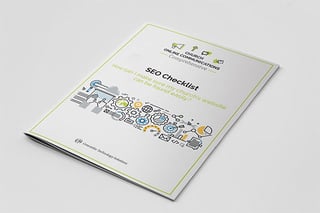
Last week, we dove into the topic of social media and how you can use it to direct people to your church’s website. This week, we’re going to talk about the number one way to bring people to your site: search engine optimization.
What is Search Engine Optimization (SEO)?
SEO is the method of increasing a page’s ranking in search results by making a better experience for users. This isn’t manipulation; it’s simply a best practice. When an individual searches for something, your website competes against all other websites to be the top listing in the search-engine results page.
Search engines like Google use complicated algorithms to determine which websites should display first. These algorithms are designed to support the users’ desires, not website owners’, so you can’t control exactly when your site will appear. But there are many things you can do to influence how search engines read your site and encourage them to display your site for the right people.
Why Should Churches Care?
SEO is the best way to attract new people into your audience, and keeping SEO top of mind helps you stay focused on that audience and create the best experience for them. In other words, SEO removes barriers and provides the best opportunity for potential visitors to encounter the Gospel in your church’s online communications.
For most searches that are made, it’s ok for your church to not to be displayed, but for some it is critical that it is. For example, if someone searches “restaurants in St. Louis,” your church probably doesn’t need to be displayed in the results. But if someone searches “Christian cancer support group in St. Louis” and your church has a cancer support group, it’s very important that your website shows up near the top of the list.
The Four Pillars of SEO
There are four main factors that affect how a website performs in search results.
- On-Site Factors. This is comprised of the content you put on the pages of your blog or website. This includes things like site navigation, font styles, links, and images. Make sure your content is high-quality, substantive, current, and written for people.
- Off-Site Factors. These factors are a step out of your immediate control, but you can still influence them. They include trust (are users given the experience they expected before they clicked on your content?), popularity (how many people are visiting your content?), backlinks (are other users willing to share your content?), and engagement (do users stay and navigate deeper into the site?).
- Technical Factors. This is where you might need a little more expertise. Factors such as the site architecture, XML sitemap, Robots.txt files, and site performance all contribute to search rankings.
- Audience. This is the element affecting your search rankings that you have the least control over. Search engines store a wealth of data about their users so they can provide them with the most relevant results. Factors such as a user’s location, demographics, and geographic location greatly influence what is displayed for each of their search queries.
Another thing to be aware of is that that search engines don’t actually search the live internet; they search their indexation of the internet. Search engines like Google have “robots” that crawl the web and copy information to their databases, which is then used to return results for searches. The most popular websites are indexed every few minutes, while less popular ones are only indexed every few days or weeks. Watch this video from Google to learn more.
Types of Search Results
With the web and Google’s algorithm constantly changing, new types of information beyond links to pages are available as search results. Here are the key result types for churches to keep in mind.
- Organic Results. Organic search results are ones that are displayed simply because of their relevance to what the user searched for. Organic results are influenced by the four pillars listed above, and they’re the type of search result most websites strive to obtain.
- Paid Ads. These appear at the top of a search-results page above the organic results. They are marked as advertisements and are influenced by a bidding system. Ad platforms like Google AdWords influence these rankings.
- Local Knowledge Graph. These results include things like maps or, say, places to buy tickets if a user searched for a local event. These results receive their information from sources like Google My Business.
- Images, Videos, and Tweets. Text is no longer the only media that is indexed because many users now perform searches in order to find photos, videos, or social media posts. The four pillars affect these results.
Now that you have a basic understanding of SEO, how do you implement that knowledge and still get the rest of your work done? In next week’s post, we’ll talk about saving time in all of your church’s online communications.

Need Help Getting Started?
Download the free SEO checklist. Print it, cut it out, and tape it to the edge of your computer monitor to ensure you never forget any important elements on new pages.
Free Training Course
This blog post was part of the training series Church Online Communications Comprehensive. All the course materials are available online for free, and you can move through the course at your own pace. Start working toward an effective online communications strategy for your church today!
About the Author
Follow on Linkedin More Content by Peter Frank
























